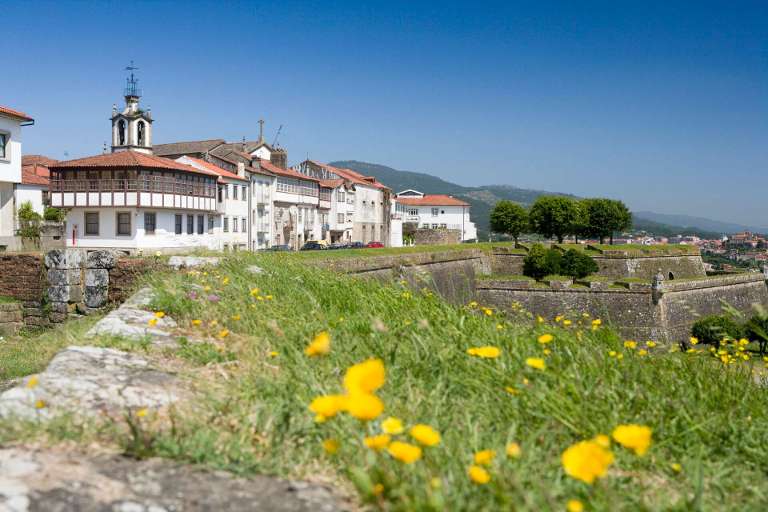Introduction

When the only traffic jam is caused by a horse drawn cart laden with the grape harvest, or a black clad old lady ushering her herd of goats, a meander along the blissfully unspoilt rural byways of Costa Verde and Minho cannot fail to be relaxing.
The countryside is a rich patchwork of maize fields and vineyards, with green vines atop tall granite pergolas shading spindly cabbages below and traditional wigwam shaped corn stacks dominating the landscape. Women, heads held high with produce, make their way to and from the fields, or from the river banks where the age old ritual of clothes washing and companionship takes place in defiance of modern technology.
Hospitality is second nature to this unspoiled people and genuine friendship easy to come by. They are, quite simply, people who have time for people. Occasionally, these quiet unassuming folk will break the tranquillity of the countryside with their boisterous religious festivals or 'festas', which take placemainly in July and August.
Cuisine
The abundant pergolas of the Vinho Verde grape produce young, gently fruity white wines. The rounder Alvarinhos are a worthy accompaniment to the freshly caught seafood or 'Arros de Marisco'- rice cooked with shellfish, and a variety of pork and chicken dishes, often casseroled and served with rice and vegetables. The portions are unfailingly generous and yet the restaurant bills for this fare are negligible.
Climate
Northern Portugal is a land of vines and citrus fruits and therefore enjoys a sunny and warm climate. Especially beautiful is the month of June, when the countryside retains the fresh greenness of spring, the meadows are splashed with the blue and yellow of cornflower and buttercup and summer temperatures are well under way - around 25°C.


















